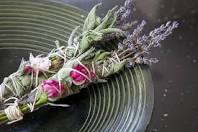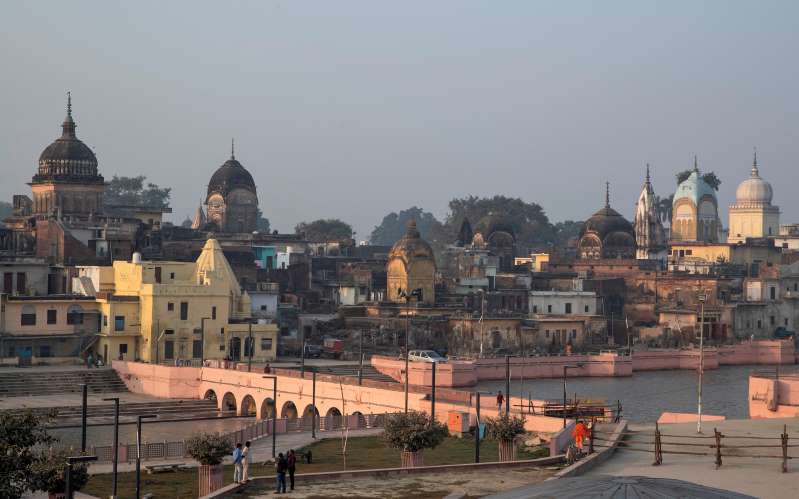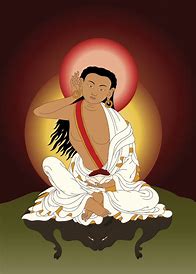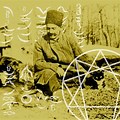Smudge Sticks






Smudge Sticks
In the native American spiritual traditions, smudging plays a central role. Smudge sticks are long bundles of fragrant plant material, wound tightly, lit at one end until the material catches fire, then blown out so it continues to smoulder releasing smoke.
The fragrant materials used by native Americans are usually sage, wormwood, cedar or sweetgrass. Occasionally, depending on the location within the USA and Canada, the soft young stems of pine are used - these have pine needles attached and are very pliable.
There is also a plant called prairie lavender which is included in the smudge sticks of certain Nations; although it is not of the same species of lavender known throughout Europe it has somehow acquired the name lavender from early European settlers.
Sage
There are many types of sage, including salvia apiana which can grow very tall and be over one hundred years of age. Another variety often used is salvia columbarne. Sage brush, artemisia tridentata, belongs to the wormwood family, rather than to the sage.
Wormwood
Artemesias belong to the wormwood family although they are sometimes called sage. They bear no resemblance to the sages we know in Europe. In native American culture, artemisia spinescens is sometimes used in smudge sticks.
Cedar
Often, the trees that are called cedar are actually of the juniper family, such as juniperus virginiana all types of cedar needles are also used, including thuja occidentalis.
Sweetgrass
This is sometimes called vanilla grass, and is hierochloe odorata, a tall green grass which becomes yellowish when dried. On drying, its aroma becomes more apparent. In some nations it is put on the hot stones of sweat lodges.
In all the above, it is the leaves and soft stalks that are used. Smudge sticks are held in the hand, carrying smoke to where it's required, or the smoke is directed by the hands or with a feather.
Other cultures use a small branch of a plant or tree to direct the smoke, often of the same species as that used in the smouldering fragrant material.
You could also use big crystals to spread the smoke around, or other stones that you are attuned to - or amber, which is a resin from a plant.
Reference: The Fragrant heavens: Valerie Ann Worwood
Holy Smoke - For Purification







Holy Smoke - For Purification
Smoke comes from fire which has always been considered one of the main elements in purification, along with prayer. In Buddhist temples in Japan and China, the smoke from burning material is used not only to send prayers upwards, but to smoke the body for spiritual cleansing, purification and healing of the auric field. People can be seen using their cupped hands to direct the smoke over their heads and shoulders before entering the temple.
Incense is often used, asd, as I have discovered on occasion, some rather less aromatically pleasing materials. I have found myself in thick, pungent clouds of smoke, which filled my lungs and clung to my clothes all day.
The small lumps mof resinous incense burnt in censers in Christian churches - particularly of the Orthodox and Coptic traditions - can produce large amounts of smoke, which pervades not only the building, but engulfs the congregation within. Native Americans use smudge sticks made of fragrant herbs, grasses and trees; directing the smoke around people as well as places with a feather.
All these, and other, traditions use the smoke of natural, fragrant plant materials. The purpose of these ceremonies may be specific in that they mark a rite of passage - such as birth, menarche, manhood, marriage, menopause, retirement and death - or aim to improve ill-health. or they may be more general in that they aim to cleanse the auric field and alter the energy residing within a space or emanating from a person.
Smoking is thought to clear negative influences, restore balance, induce spiritual purification, increase spiritual awareness, or prepare the body-mind-spirit for sacred ceremony. Smoke is also used to cleanse environments, whether at home or work, and in exorcism.
Essential oils incorporate the two elements that constitute the smoke ceremonies - fire and fragrant plant material. They do not themselves produce smoke- unless burnt on charcoal - but many people find this an advantage. In burning fragrant plant material, the aroma is released by the heat, but so too is a great deal of smoke.
Essential oils are also readily available, whereas some of the plant materials traditionally used are not. Essential oils can be used on their own -in diffusers or simply on smelling strips - and directed, as in smoke ceremonies, around the head and body of a person or around the room.
Whatever material is used, and whatever the purpose, the other crucial element is spiritual thought. As you go about the business of using holy smoke, or essential oils on their own, invoke your spiritual source and put your whole mind into asking for assistance in achieving your goal.
Essential oils are flammable, and care should be taken when using fire of any kind. The only time I recommend using essential oils in conjunction with fire is in candles. Shop-bought 'aromatherapy' candles may contain synthetic fragrances, which have nothing to do with aromatherapy or cleansing and purification.
You can make your own essential oil candles using candle making kits and pure, natural essential oils.
Natural resins have, of course, been placed on braziers or censers for millennia, but few of us own the equipment to replicate this system of use. If you do, the incenses traditionally used - depending on the culture - include frankincense, myrrh, copal, benzoin and gum Arabic in resin form.
In Asia, especially japan, fragrant woods such as Jinko, kara-mokkoh and kyaras are highly prized, and come in delicate strips which are placed on charcoal or in small incense burners. They are generally used to raise the spiritual energetic level of a person, rather than for purification and protection.
If you have a fireproof incense dish, usually made of pottery or metal, essential oils can be used in conjunction with small round pieces of charcoal that are sold specifically for use with incense. But, be warned, the effect is dramatic as the essential oil smoke shoots high into the air, and before trying this method do a test-run outside, and stand well back.
The charcoal does not always look as if it's alight when it actually is, so care must be taken. patience is required: the charcoal will light in one place, and tiny sparks can be seen running across the surface as the heat activates the entire piece, which can still at this point be black. In fact, red-hot, without the red! Wait until this process is complete before adding the essential oils, which should be used in moderation.
Reference: The Fragrant Heavens: Valerie Ann Worwood
Modi, Muslims to attend temple ceremony on contested India site






Modi, Muslims to attend temple ceremony on contested India site
LUCKNOW, India (Reuters) - Indian Prime Minister Narendra Modi and two prominent Muslims who lived through deadly riots following the razing of a mosque in 1992 plan to attend the foundation-laying ceremony for a Hindu temple on Wednesday on the same site.
Modi, whose Hindu nationalist party had led demands for a temple there dedicated to the god-king Ram, will unveil a plaque, his office said in a statement.
His visit to the northern Indian town of Ayodhya comes despite his interior and energy ministers both testing positive for COVID-19 days after a cabinet meeting last week.

Construction of the temple was made possible by a verdict last year from the Supreme Court awarding the disputed site to the Hindus.
The planned visit by the two well-known Muslims showed an easing of animosity between followers of the two faiths in one of Hindu-majority India's most communally sensitive regions.
"Whatever happened are things of the past," said Iqbal Ansari, one of the Muslim litigants. "I've been invited and I think it's the wish of Lord Ram and I am going to attend it."
Mohammad Sharif, another Muslim honoured with one of India's highest civilian awards for doing the last rites of unclaimed bodies since the riots, said he too had got an invitation and was keen to be there.
In 1992, a Hindu mob destroyed the 16th-century Babri Mosque on the site, triggering clashes in which about 2,000 people, mostly Muslims, were killed.
Hindus believe the site is the birthplace of Lord Ram, a physical incarnation of the Hindu god Vishnu.
Barricades have been put up across the town with heavy police presence, as authorities try to limit the number of visitors to maintain social distancing.
At least two priests in the area and four policemen have tested positive for COVID-19.
Still, nearly 200 people are likely to be there at the event, including 135 holy people and priests from Nepal.
Reference: Reuters: By Saurabh Sharma 17 hrs ago: 5th August 2020: (Reporting by Krishna N. Das; Editing by Shri Navaratnam and Andrew Cawthorne)
Pakistanis take livestock to 'cow wash' ahead of Eid





Pakistanis take livestock to 'cow wash' ahead of Eid
KARACHI, Pakistan (Reuters) - The days leading up to the Muslim feast of Eid al-Adha are busy for Uzair Dawood, the owner of a motorcycle wash in Pakistan's southern city of Karachi - not for fixing vehicles, but washing cattle.
Eid al-Adha falls on Saturday in the South Asian nation, and like Muslims across the world, Pakistanis purchase cattle to sacrifice on the occasion as a religious obligation.
"It is very busy day just a day before Eid and we don't have time for a bike wash," Dawood told Reuters as he busied himself lathering a cow with soap before using the pressure hose to clean the animal.
Sacrificial animals are treated with deference by Pakistanis, who often decorate the cattle they have purchased with colourful garlands.
"We bring these animals here because we want them neat and clean because it is an animal for sacrifice and we are happy to see it happy," one customer, Osama Haider Ali, told Reuters.
Dawood's shop is located in a densely populated district of Karachi, Pakistan's largest city, and is one of many vehicle service stations with customers queuing up with animals.
"Servicing" cattle is not as easy as motorcycles, says Dawood who charges 200 to 300 Pakistani rupees ($1.20 to $1.80) per wash, for which he uses shampoo, soap, brush and a hose.
"A vehicles remains in its place ... but washing an animal is risky. It can hit you, it can kick you. It can break the rope".
Eid al-Adha is observed by Muslims to commemorate their belief that prophet Abraham was willing to sacrifice his son as an act of obedience to God, before God replaced his son with a ram to be sacrificed instead.
Muslims who can afford it sacrifice cattle. But it can also be a camel, goat, sheep or ram, depending on the region.
The coronavirus has cast a shadow over this Eid, with fears of another spike in infections prompting authorities to warn people to minimise movement, avoid cattle markets and refrain from public gatherings to witness the slaughter of sacrificial animals.
Eid al-Fitr, marked in May, was followed by a spike in COVID-19 infections with new daily cases hitting up to 7,000 in June.
Daily infections have fallen to around 1,100 in Pakistan over the last few days of July.
Reference: Reuters:1 day ago: 31st July 2020
Articles-Latest
- Koran burning conviction sparks fury as blasphemy law 'returns to UK'
- Robert Francis Prevost - Pope Leo XIV
- Pope Francis' death follows recent health challenges. Here's what we know about how he died.
- Easter April 2025 - international Celebrations
- The Rule of the twelve psalms -Worthy is the Lamb
- Religion in Africa Before Christianity and Islam
- 6 The Origin of Yahweh
- Dumo Di Milano
- What Did the Crow Tribe Believe In: Discover The Beliefs!
- 7 Reasons Historic Christianity Rejects the Book of Enoch
- 8 Breathtaking Mountain Monasteries Around the World
- Ethiopian Bible is oldest and most complete on earth
- Muhammad Muhammad was a prophet and founder of Islam.
- World Day of the Poor – SVP Christmas Campaign 2024
- Pope Francis to open 5 sacred portals on Christmas Eve — for a ritual that’s never been done before
- The 144,000 in Revelation
- Over 73 dead bodies 'used for meditation', 600 crocs in a pond, found in two Thai temples
- Occultism: Western Occult Tradition
- What is a Mudra
- Blood Sacrifices: Ancient Rituals of Life and Death
Articles-Most Read
- Home
- Let There Be Light
- Plants that feel and Speak
- The Singing Forest
- The Singing Forest-2
- Introduction
- Meditation
- Using Essential Oils for Spiritual Connection
- Heaven Scent
- Plants that Feel and Speak-2
- Purification
- Making the Spiritual Connection
- Anointing
- Essential Oils: The unseen Energies
- The Sanctity of Plants
- The Aroma Of Worship - Introduction
- The Aroma Of Worship-Foreward
- Methods Of Use
- Spiritual Blending
- Handling and Storage






